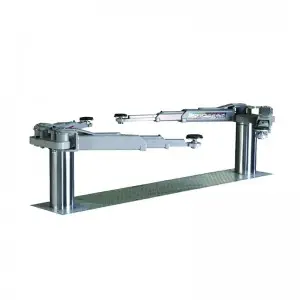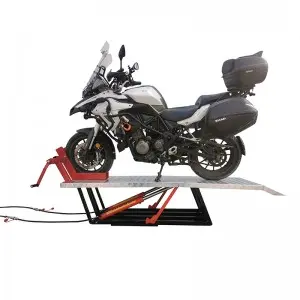In the world of automotive maintenance and repair, efficiency, safety, and convenience are paramount. For serious car enthusiasts, professional mechanics, and even casual hobbyists, the tools and equipment used to work on vehicles can significantly impact the quality of work and the enjoyment of the task. One such essential piece of equipment that has gained popularity in recent years is the inground lift. This article explores what inground lifts are, their advantages, types, installation, and maintenance, helping you understand why they are a valuable investment for any garage.
What is an Inground Lift?
An inground lift, as the name suggests, is a hydraulic lift installed below the ground level, providing a seamless and efficient lifting solution for vehicles. Unlike traditional above-ground lifts, inground lifts are installed in concrete pits, allowing a car to be driven directly onto the lift without obstruction. This design provides a clean and unobtrusive look while offering enhanced accessibility for maintenance and repairs.
Advantages of Inground Lifts
1. **Space-Saving Design**: Inground lifts are particularly beneficial for garages with limited space. Since they are recessed into the ground, there is no need for overhead clearance, allowing for more efficient use of vertical space.
2. **Enhanced Accessibility**: The design of inground lifts enables mechanics to access all parts of the vehicle easily, promoting better ergonomics during repairs. This eliminates the strain often experienced when working with above-ground lifts, where reaching certain areas of a vehicle can be cumbersome.
3. **Stability and Safety**: Inground lifts are typically more stable than their above-ground counterparts due to their installation in concrete. This stability reduces the risk of accidents and enhances safety for those working beneath the vehicle.
4. **Aesthetic Appeal**: For those who value the look of their garage, inground lifts offer a more polished appearance. The lift is hidden when not in use, allowing for a clean and uncluttered environment.
5. **Increased Vehicle Capacity**: Many inground lifts are capable of accommodating multiple vehicles simultaneously, making them suitable for businesses that manage multiple client vehicles or for automotive enthusiasts with a collection of cars.

The Ultimate Guide to Inground Lifts: Elevate Your Automotive Experience with This Essential Garage Addition
Types of Inground Lifts
1. **Two-Post Inground Lifts**: This type utilizes two vertical posts to support the vehicle. It’s a popular choice for general repair and maintenance tasks and is known for its simplicity and efficiency.
2. **Four-Post Inground Lifts**: These lifts feature four posts and are ideal for storing vehicles as well as servicing them. They provide increased stability and are often used for tire rotations and brake changes.

The Ultimate Guide to Inground Lifts: Elevate Your Automotive Experience with This Essential Garage Addition
3. **Scissor Inground Lifts**: Scissor lifts utilize a crisscross design, creating a compact lifting system that occupies minimal floor space. This type is great for low-clearance vehicles and is often favored for residential garages.
Installation Considerations
Installing an inground lift requires careful planning and execution. Here are some key considerations:
– **Space Requirements**: Ensure the garage has enough space for the pit, along with adequate room for vehicle clearance when lifted.
– **Electrical and Hydraulic Needs**: Most hydraulic lifts require electrical connections and hydraulic lines that need to be properly installed to ensure safety and functionality.
– **Permits and Building Codes**: Check local regulations and obtain any necessary permits before installation. Compliance with building codes is crucial, especially regarding safety standards.
– **Professional Help**: It’s advisable to hire professionals for installation to ensure that it is done correctly and adheres to safety guidelines.
Maintenance and Safety Tips
To ensure the longevity and functionality of an inground lift, regular maintenance is essential. Here are some maintenance tips:
– **Regular Inspections**: Conduct routine checks for any signs of wear or damage, ensuring all mechanical parts are in good condition.
– **Hydraulic Fluid Levels**: Regularly check and maintain the hydraulic fluid levels within the system.

The Ultimate Guide to Inground Lifts: Elevate Your Automotive Experience with This Essential Garage Addition
– **Clean the Pit**: Keep the area around the lift clean and free from debris to prevent any obstructions or hazards.
– **Follow Manufacturer Guidelines**: Adhere to the manufacturer’s recommendations for maintenance and usage to maximize safety and performance.
In conclusion, an inground lift is a valuable asset for both professional and DIY automotive enthusiasts. Its space-saving design, enhanced accessibility, and aesthetic appeal make it an excellent choice for any garage. By understanding the various types, installation requirements, and maintenance practices, you can confidently incorporate an inground lift into your automotive workspace, elevating both your experience and the quality of your work.Cylinder



